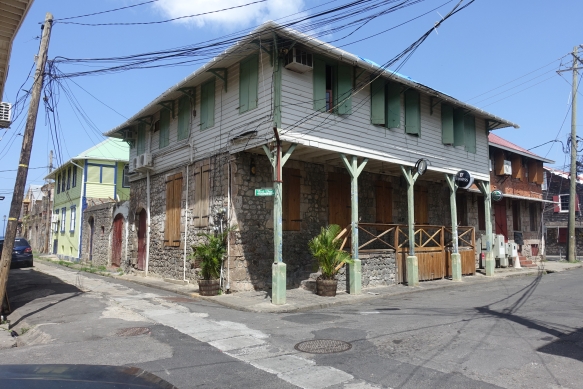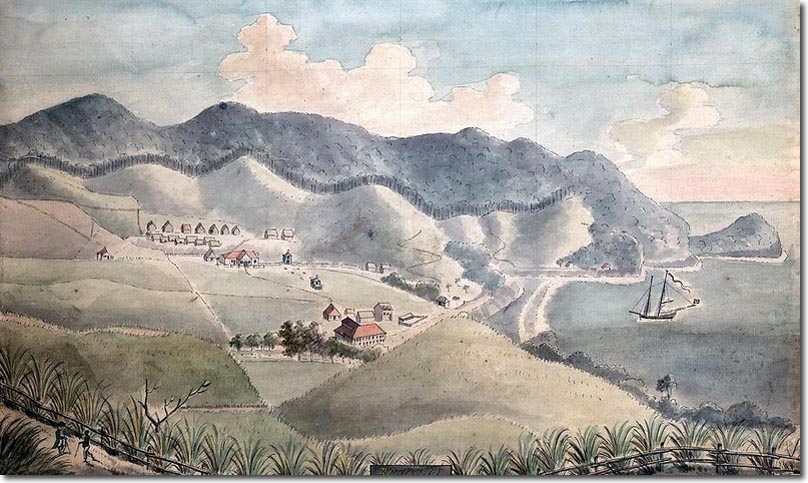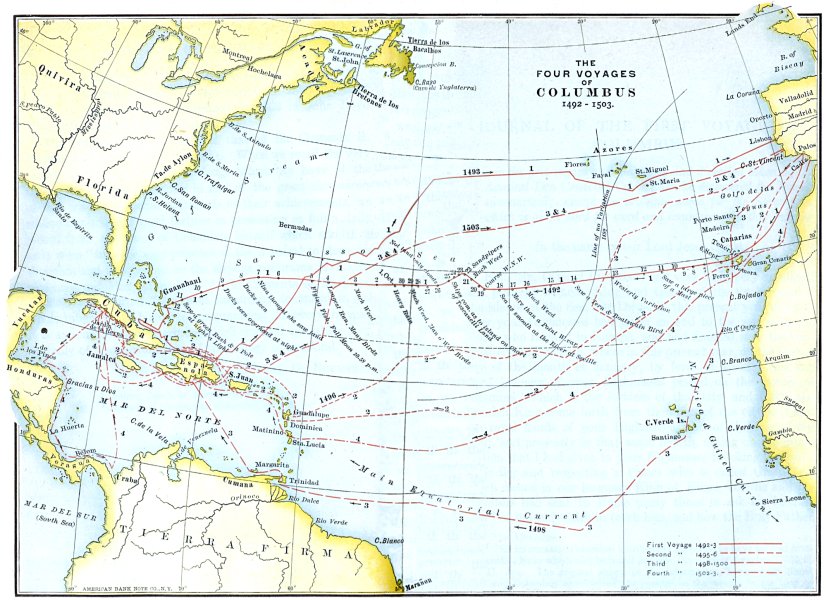The cacao tree, Theobroma cacao, originated in the upper reaches of the Amazon basin, the foothills of the Andes, in what is now southeastern Ecuador, sometime after the last Ice Age about 11,000 years ago. Evidence in Santa Ana (La Florida), an archaeological site in Zamora-Chinchipe Province, confirms that the cacao tree was domesticated there about 5300 years ago.

The plant has mutated through countless generations. Today there are 11 recognized varieties (genetic clusters) of cacao, natural as well as artificial strains. Like wine, the cacao bean qualities are competitive and contentious with more than 400 different flavor measures, all but a few of which are beyond most chocolate consumers.
Cacao fruit can be eaten raw. The pulp is sweet and lemony, the seeds are hard and bitter. But cacao became famous as a drink with archaeological evidence of the process that is still used today – fermentation, drying, roasting, winnowing, grinding and blending – without which there is no chocolate flavor.

Processing makes excellent chocolate, or not, depending on the beans and treatment. In this regard, Ecuador has a commanding advantage. First, the rich, fertile soil nourished by volcanoes, jungles, and coexisting ecosystems results in the primeval chemistry and complexity of its beans, sourcing from the same valley where the plant was first cultivated. Second, Ecuador has year around ideal conditions for growing, fermentation and drying. The resulting cacao, known as Nacional (also Arriba Nacional or Ancient Nacional), has been the world’s premiere for 5000 years.
Cultivation in the upper Andean valleys spread to the coastal areas sometime before 2000 BC as agriculture matured locally along with tomato, peanuts, cashews, rubber and balsa wood. Cultivation spread south to Peru and north as far as Mexico over the next millenium. Cacao gained a divine status in Mesoamerican cultures – Maya (2000 BC), Olmecs (1000 BC), Izapan (100 BC), Toltecs (800 AD), Incas (13th Century AD), and Aztecs (14th Century AD) – a frothy beverage, mainly consumed by the elite, used in rituals, ceremonies, festivals, as well as currency and tax payments. Cacao beans became so valuable that they were counterfeited using materials such as ash, clay, amaranth dough, wax, avocado pits, mud or sand, painted or dyed, and mixed with real beans.

The Cacao Belt, is a strip 10 degrees either side of the equator, including West Africa, Indonesia, and Ecuador – where 75% of the world’s cacao is grown. Mexico (15-32 degrees North) has cacao agriculture, but even in Montezuma’s time, 16th century AD, the best beans came from Ecuador. Although the Aztecs developed blending cacao to extend and improve their own harvests with flowers, pimienta gorda (allspice), vanilla, maize, and chili powder, among other ingredients, the most prized beans came through a trading network stretching from the highlands of Mexico to the jungles of South America – gold and gems went South to Ecuador and Peru and baskets filled with Arriba Nacional cacao came back North.

Columbus encountered the cacao bean on his fourth voyage, August 15, 1502, as he robbed yet another native canoe that contained trade goods, including cacao beans. His son Ferdinand observed, “when they were brought on board ship together with their goods, I observed that when any of these almonds (cacao beans) fell, they all stooped to pick it up, as if an eye had fallen.”
But Columbus seems to have overlooked the potential. It was Hernan Cortes visiting and plundering the Aztec capitol Tenochtitlan (Mexico City) in 1519 who appreciated the value of xocolatl, the Aztec term for cacao. He sipped ceremonial quantities with Montezuma, who famously drank 50 cups per day. Cortes is credited with adding sugar to the drink, established his own cacao plantation, raided the Aztec cacao (and vanilla) warehouses and retuned to Spain in 1528 with beans and xocolatl making equipment where it was a hit with the Spanish elite, often reinforced with sugar, cinnamon and nutmeg.
The drink spread through Europe as an elite commodity. The first English chocolate house opened in 1657, and soon chocolate houses were a thing. Spain did its best to control the market, limit supply, and inflate the prices. That worked pretty well for 200 years. But, as countries in the New World ditched Spain, cacao entered the free market with two significant cacao booms:
1779-1842
In early 18th century England, Chocolate Houses add milk to the cacao drink. It created a sensation. In 1764 John Hannon and Dr. James Baker import beans and build a chocolate factory in Dorchester, Massachusetts, the first in the USA, making cakes of chocolate used for drinks and baking.
Until 1828 chocolate remained a drink, and a rather fatty one, because of the high percentage of cacao butter. In that year Dutch chemist Casparus van Houton used a hydraulic press to extract butter from the cacao paste. The butter was blown into powder and melted with liquids, allowing a greater variety of chocolate drinks.
In the same year, Casparus’s son Coenraad invents “dutching,” or alkalizing and together the advances resulted in bar chocolate, a more stable and transportable product. In 1847 British chocolatier J.S. Fry and Sons introduce mass production for chocolate bars. They were coarse and bitter, but allowed significant increases in production at lower cost. In 1875 Switzerland, Daniel Peter and Henri Nestlé developed a process to produce dried powered milk, which could then be added to the chocolate paste to produce the famed Swiss milk chocolate. Cadbury and Fry’s soon follow. The chocolate market expanded with every advance.

1895-1913
In 1879 Rodolphe Lindt invents the conche, a process of agitating the chocolate to fully enrobe the cacao solids in cocoa butter, making it smoother, and also aerating the chocolate so that acids evaporate, making it less bitter. Conching perfected the chocolate bar, giving it a smooth, melt-in-your-mouth consistency that blended well with other ingredients.
In 1893, Milton Hershey bought Germany’s chocolate production display from the Chicago World’s Fair, shipped it back to his caramel factory in Pennsylvania where he installed it to establish the Hershey Chocolate Company. The business was a spectacular success, propelling Hershey into the elite class of 19th century industrialists including Rockefeller, Sears, Firestone and Carnegie. He built an entire town for his employees, modestly named after himself, bought a sugar plantation in Cuba, opened Hersheypark (50 years before Disneyland), and Hotel Hershey where you can still enjoy their spa’s Peppermint Scrub and a Chocolate Fondue Wrap ($160).
Chocolate officially reached global distribution during the World Wars. Hershey specially prepared “Military Chocolate” to the Army’s specification:
- Weigh 4 ounces (113.4 g)
- High in food energy value – 600 calories
- Able to withstand high temperatures
- Taste “a little better than a boiled potato” (to keep soldiers from eating their emergency rations in non-emergency situations)

Up through World War 1, Ecuador was the leading developer, producer, and exporter of cacao, all due to the quality of Nacional beans. As cultivation spread further to Venezuela, Brazil, Colombia, and Trinidad, cacao interbred and additional strains developed. Three varieties of Theobroma cacao were identified in 1753 by the Swedish scientist Carl von Linné – Criollo, Forastero and Trinitario – all derivatives of Ecuador’s Nacional. The three varieties are still recognized today:
- Forastero represents about 85% of the world’s cocoa production. It is a high-yielding, disease resistant hybrid, originally from Brazil, then exported to West Africa and Indonesia. The word means ‘stranger’ in Spanish. It is ordinary, everydayk “bulk” cocoa with strong, earthy flavours. Forastero is cheaper to grow, consistent and reliable. It is considered bland by critics, but Forastero mega-producers like Hershey’s and Cadbury savagely defend the quality. Sugar makes up for Forastero’s alleged lack of flavor in many consumer chocolates – Hershey’s Milk Chocolate Bar is 53% sugar, 25% Forastero cacao.
- Trinitario represents about 12% of the world’s cocoa production. It was bred following Trinidad’s 1727 hurricane in which most of the criollo plantations were destroyed. Forastero seeds were brought from Venezuela and cross-fertilized with the native criollo beans resulting in the Trinitario. It is grown particularly in the Caribbean but also in Venezuela and Colombia and is considered a fine flavor cacao.
- Criollo, another fine flavor cacao, makes up just 2% of global cacao production. The absence of tannins gives Criollo a unique creaminess, sweetness, and roundness. It is the variety most closely related to the original Nacional. It has been cultivated for at least 1500 years, the cacao of the Mayas and the Aztecs. By the early 20th century, its production was abandoned due to its low yield, at risk of extinction for many years. Criollo is scarce and expensive, rarely used in pure form, usually mixed with Forastero, but several small producers are reviving the strain. It is still found in Venezuela, Mexico, Nicaragua, Guatemala, Colombia, Samoan Islands, Sri Lanka and Madagascar.
Nacional, the primeval cacao, remains a national treasure, grown only in Ecuador. It was the only cacao cultivated in Ecuador until the early 20th century, an era when Ecuador produced 30% of the world’s supply. At that time, it represented 70% of Ecuador’s exports and enabled a wealthy class of mega-plantation owners. Then disease struck the crops. Frosty pod disease (Moniliophthora roreri) in 1916 and Witches’ Broom Disease (Moniliophthora perniciosa) in 1919 decimated Ecuadorian cacao production by 77%. A century of hybridization and globalization took place which saw the majority of cacao production move to West Africa and Indonesia, almost exclusively the hardy Forastero, although Criollo, Trinitario and later variations held fast in regional locations. By the beginning of the twenty-first century, some experts believed that genetically pure Nacional cacao no longer existed.
Enter the Instituto Nacional de Investigaciones Agropecuarias, Ecuador’s agricultural research institute. In 2009, INIAP collected DNA samples from 11,000 cacao trees throughout Ecuador of which 6 trees were confirmed to be 100% genetically pure Nacional cacao. Further testing in 2013 identified 9 more, total 15. These trees became the stock from which Nacional cacao has been revived.

Today, Ecuador produces about 5% of the world’s bulk cacao, 235 thousand metric tons, 7th largest producer in the world, at a value of about US$ 700 million. Thanks to INIAP’s research on Nacional, Ecuador supplies 60% of the global Fine Flavor Cacao, selling at premiums that often exceed market predictions.
For the last 100 years, chocolate making has been big business almost exclusively run on Forastero cacao grown in the West African British colonies (60%) where most plantations moved after the Ecuador infections. Mega producers like Cadbury, Nestle and Hershey purchase beans at bargain prices with little emphasis on quality or flavor. Who needs cacao when your product is 50% sugar? In some cases consumer chocolate bars contain as little as 11% cacao.

Not that big chocolate is going anywhere soon, but several factors have challenged the 21st century chocolate market:
- Scharffen Berger, was founded in 1996 in San Francisco at a time when there were only nine companies grinding their own cacao in the US, all huge, except for Guittard Chocolate Company (founded by a French gold miner in 1868 San Francisco). Guittard was so impressed with the quality of SB’s chocolate that they revamped their own production returning to their founder’s methods and sourcing beans from single origin craft growers like Ecuador’s ASOCIACION ARTESANAL SABOR ARRIBA (beans directly from small farmers and focusing on the unique flavors of the beans from different regions.). Scharffen Berger was sold in 2005 to the Hershey Company, and moved to Illinois, but similar small bean-to-bar makers now number more than 250 in the United States.
- Dagoba Chocolate was founded in Ashland, Oregon in 2001 by Frederick Shilling to produce organic, fair-trade, Rainforest Alliance Certified™, non-GMO chocolate. DAGOBA established the nonprofit One for All Cacao Project with the objective of strengthening cacao communities by advancing the role of women in cocoa production. The success of Dagoba demonstrated the viability of premium chocolate. The Hershey Company bought the company in 2006, expanded the product line but dropped the fair-trade certification.

- At the British Association science festival in Glasgow in September 2001, the American Association for the Advancement of Science meeting in Boston in February 2002 and the American Heart Association in Chicago in December 2002, researchers deliver the message: chocolate is good for you.
- As single origin buyers increase demand, small farmers and cooperatives increase the quality of their post-harvest processes – fermenting, drying, storing, and transport, all critical to flavor.
- Concerns rise related to the dominance of the high yield, disease resistant multi-strain varieties like Forastero/CCN-51 (Coleccion Castro Naranjal) due to mass production, low prices, poor flavor, and full- sun, monoculture growing conditions. CCN-51 is estimated to comprise 40% of global production, displacing varieties that would otherwise contribute to a more diverse genetic base, accommodate a broader ecology, support small farmers, and maintain superior flavor.
- A growing awareness of the inequities in the cacao supply chain. Large chocolate manufacturers squeeze prices to subsistence levels, pressuring plantation owners and the farmers themselves into a cycle of poverty, deforestation, forced labor, child labor, even servitude. Small producers have the economic advantage to compensate farmers fairly and to make opportunities for women, families, and small growers to participate competitively in the global cacao market.
“Ninety percent of the world’s cocoa is grown on six million small farms, and most of the farmers can’t survive on what they’re paid. Our mission is building a more equitable and transparent supply chain.”
Emily Stone, a founder of Uncommon Cacao
Ecuador’s 2018 research and redevelopment of Nacional variety brings cacao knowledge to a new level of quality and accountability. Since 2001, single origin craft chocolate has been gaining credibility and recognition. Ecuador’s research has established the genetic base for fine flavor chocolate. Global NGO’s recognize the potential for the robust cacao industry to provide fair trade family employment, sustainable agriculture, equitable investment and wholesome nutrition.
According to the Fine Chocolate Industry Association, sales of premium chocolates grew 19 percent in 2018, compared with 0.6 percent for mainstream chocolate like the classic Hershey bar. Ecuador is the leader in the production of fine aroma cocoa, with a 62% share of the world market, supporting around one hundred thousand families of small producers.
Collectives like APROCA (Asociacion De Productores De Cacao Organico Del Canton Atacames) UOPROCAE (Unión de Organizaciones productoras de Cacao Arriba Esmeraldas), and Asociacion Artesanal Sabor Arriba in Exmereldas carry on the cacao tradition with a fresh energy to promote Fine Cacao Ecuador (https://finecacaoecuador.com/):


















 Ahmadnagar is located on the Deccan Plateau, the geographic feature that defines the triangle of the Indian subcontinent south of the Ganges River. It is a tropical climate, hospitable to humans since the Stone Age.
Ahmadnagar is located on the Deccan Plateau, the geographic feature that defines the triangle of the Indian subcontinent south of the Ganges River. It is a tropical climate, hospitable to humans since the Stone Age.

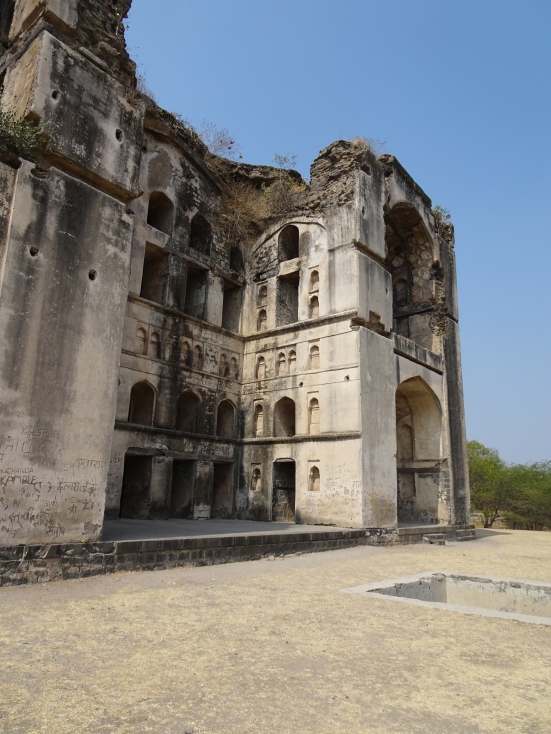



 The Mughals spent the 17th century trying to conquer the rest of India. In 1632, Shah Jahan, the 5th Mughal emperor (builder of the Taj Mahal), captured the fortress at Daulatabad, and imprisoned Hussain Nizam Shah III, the 13th and next to last king of Nizam Shahi. Shah Jahan appointed Aurangzeb as Viceroy of the Deccan.
The Mughals spent the 17th century trying to conquer the rest of India. In 1632, Shah Jahan, the 5th Mughal emperor (builder of the Taj Mahal), captured the fortress at Daulatabad, and imprisoned Hussain Nizam Shah III, the 13th and next to last king of Nizam Shahi. Shah Jahan appointed Aurangzeb as Viceroy of the Deccan. The Mughal Empire reached its peak under Aurangzeb in 1700, a kingdom of 158 million subjects (world population 650 million at the time), 10 times larger in revenue than that of his French contemporary Louis XIV, and surpassing China as the world’s largest economy with nearly a quarter of world GDP.
The Mughal Empire reached its peak under Aurangzeb in 1700, a kingdom of 158 million subjects (world population 650 million at the time), 10 times larger in revenue than that of his French contemporary Louis XIV, and surpassing China as the world’s largest economy with nearly a quarter of world GDP.
 The fort was originally built in 1427 by Malik Ahmad Nizam Shah I, namesake of Ahmednagar. It was made of mud but fortified in stone in 1562 after a 4 year upgrade. It is the site where, in 1596, Chand Bibi repulsed the Mughal invasion, though it fell under her leadership in 1599 and Chand was killed by her own troops during the 4 month melee.
The fort was originally built in 1427 by Malik Ahmad Nizam Shah I, namesake of Ahmednagar. It was made of mud but fortified in stone in 1562 after a 4 year upgrade. It is the site where, in 1596, Chand Bibi repulsed the Mughal invasion, though it fell under her leadership in 1599 and Chand was killed by her own troops during the 4 month melee.
 The Tomb of Salabat Khan II (Architect of Farah Bagh) is a three-story stone structure situated prominently 13 km from Ahmednagar, visible from almost anywhere in the city.
The Tomb of Salabat Khan II (Architect of Farah Bagh) is a three-story stone structure situated prominently 13 km from Ahmednagar, visible from almost anywhere in the city.



















































 Meanwhile, over in the Indian Ocean, the carpenters at Mandvi, India were starting up a ship building industry, producing ships 4 times that size to transport dates, fish, timber and fruits between East Africa, the Persian Gulf and India, a journey of similar dimensions. Mandvi’s ships are still making that journey.
Meanwhile, over in the Indian Ocean, the carpenters at Mandvi, India were starting up a ship building industry, producing ships 4 times that size to transport dates, fish, timber and fruits between East Africa, the Persian Gulf and India, a journey of similar dimensions. Mandvi’s ships are still making that journey.



















































 Early 20th century Roseau
Early 20th century Roseau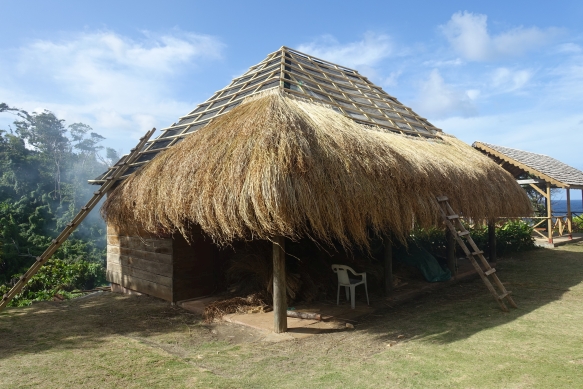



































































































 Dominica Police Headquarters
Dominica Police Headquarters



























 Abandoned Banana Plantation
Abandoned Banana Plantation Ruins of 18th century Sugar Cane Factory
Ruins of 18th century Sugar Cane Factory Coffee Tree
Coffee Tree Dynamite Rum – A local spice rum
Dynamite Rum – A local spice rum

 Papaya
Papaya
 Tobacco
Tobacco Mango
Mango






















































